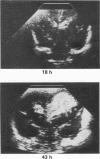Abstract
A total of 338 infants of gestational age 34 weeks or less were scanned regularly with real time ultrasound. Definite intraventricular haemorrhage was present in 126 (37%) infants, of whom 17 (13.5%) showed extension in the size of the initial haemorrhage, mostly into the cerebral parenchyma. These 17 infants were carefully matched with 17 others who had an initial haemorrhage of the same size and the same number of adverse perinatal factors. On analysis those infants with extension of intraventricular haemorrhage were constantly more acidotic and more anaemic than the control group. It is possible that careful attention to maintaining optimal condition after the onset of intraventricular haemorrhage may reduce the risk of extension.
Full text
PDF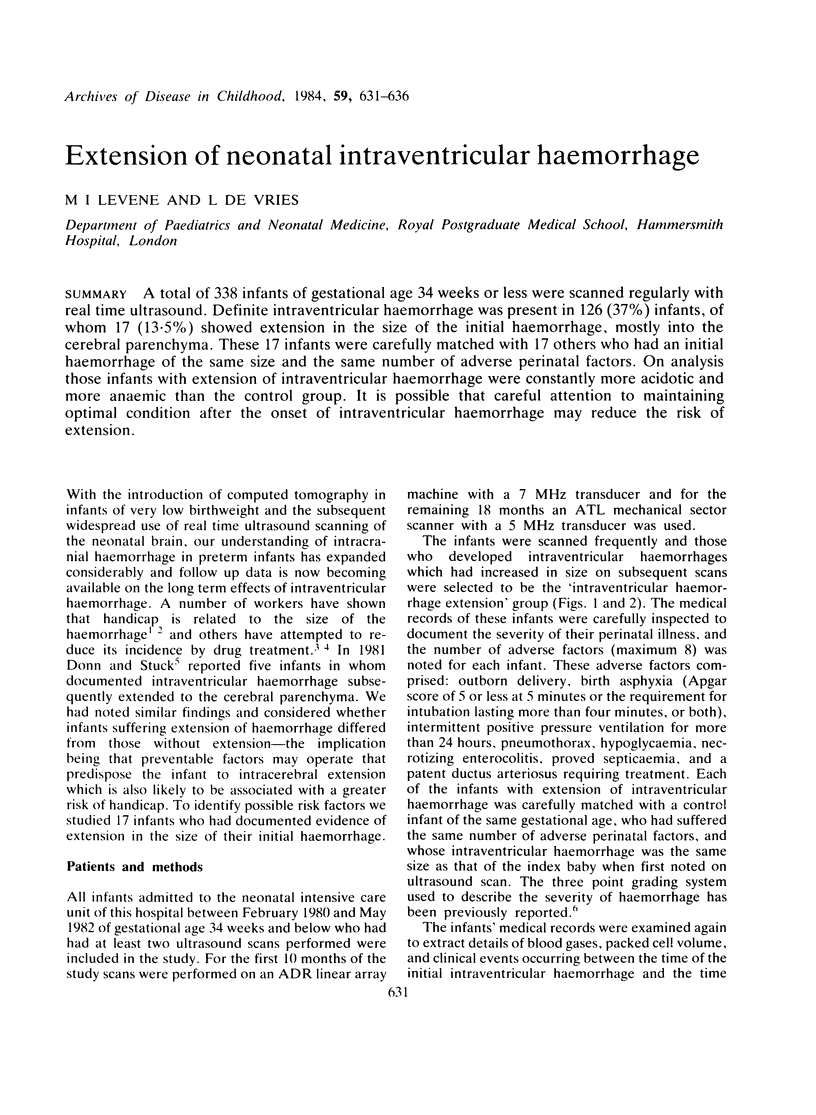
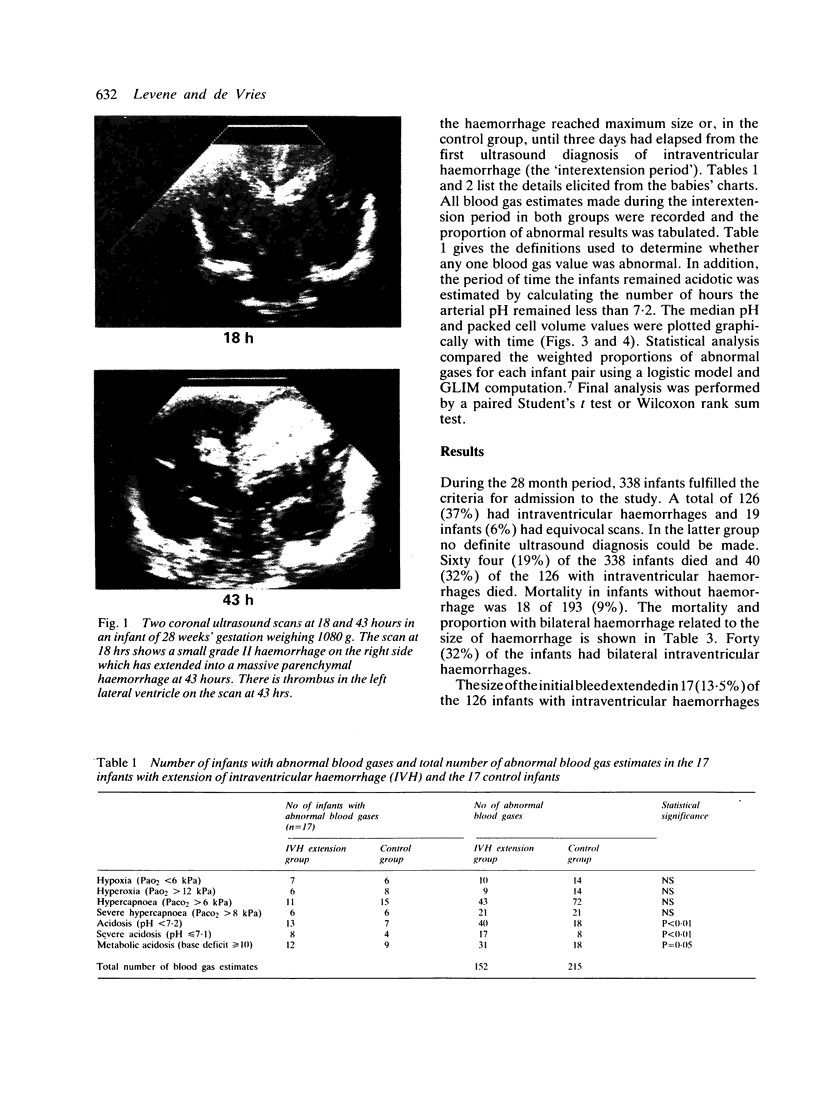
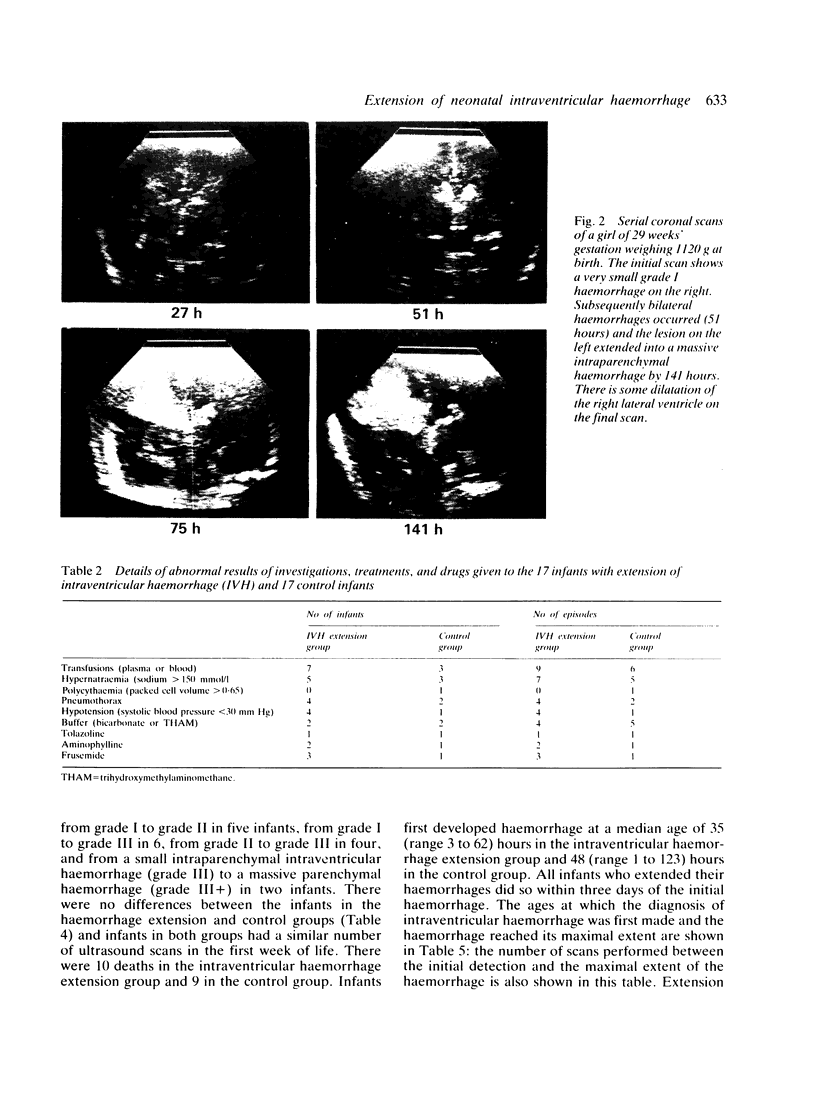
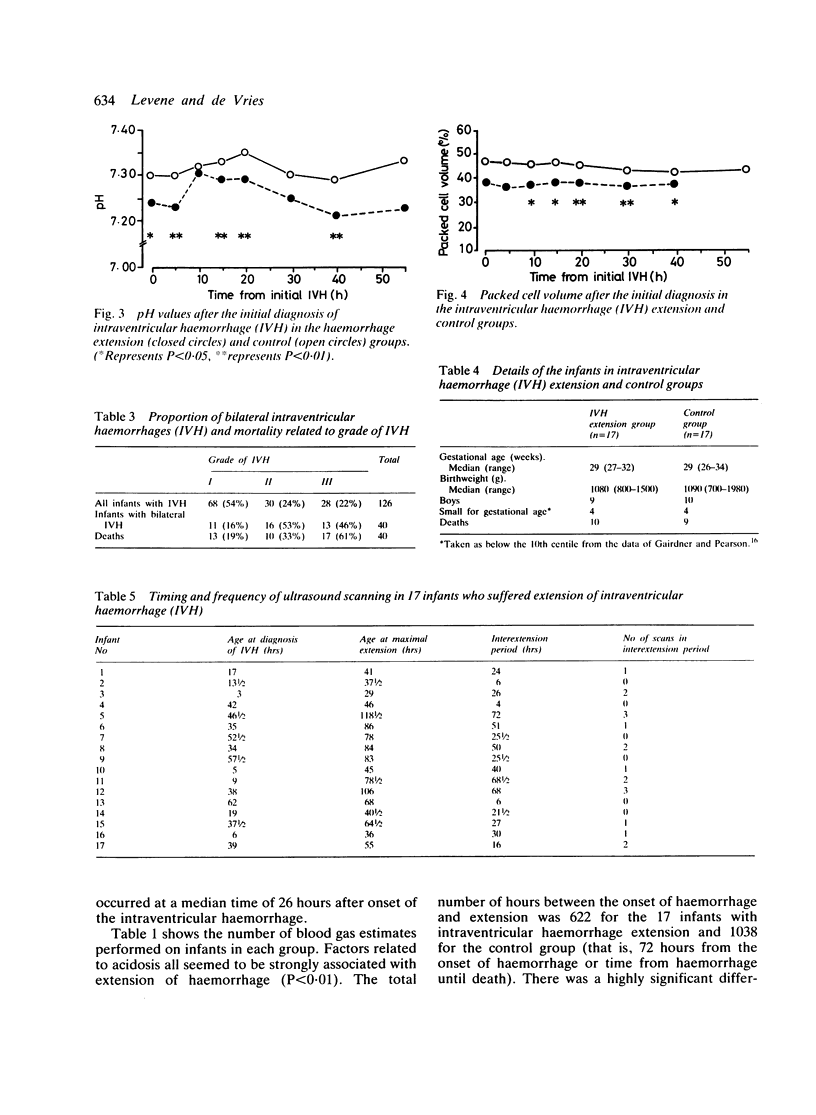
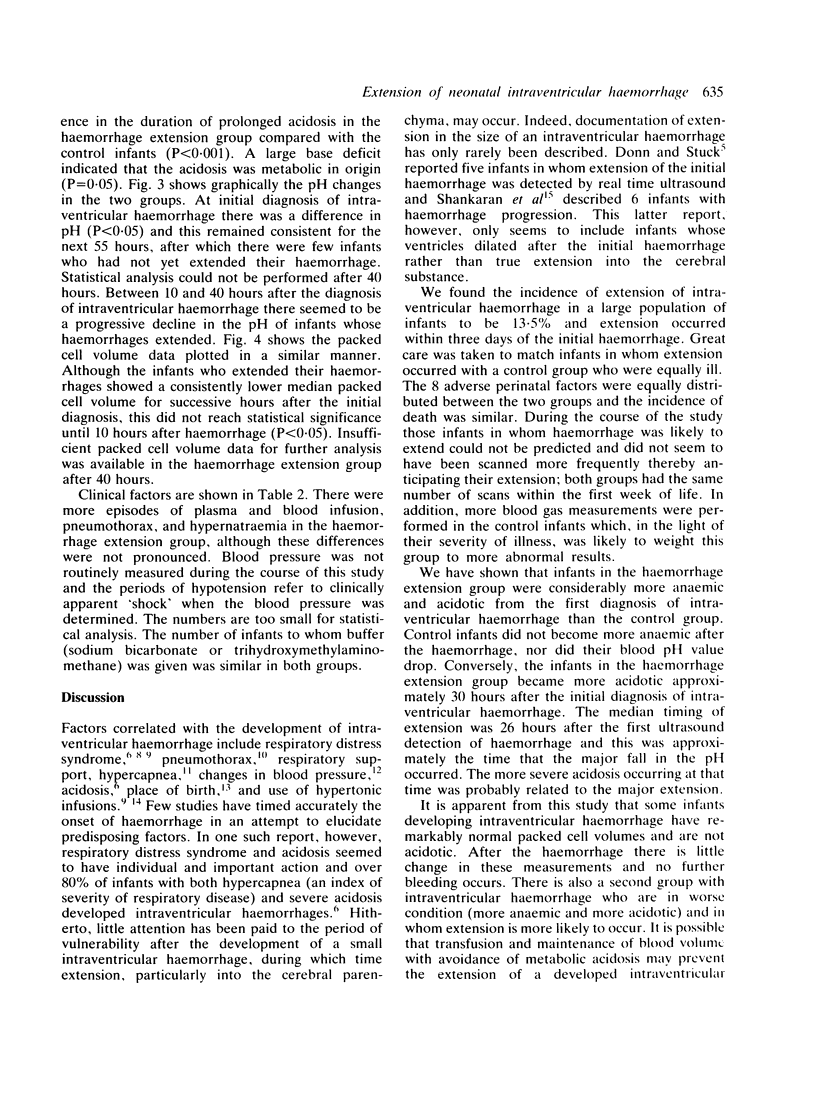
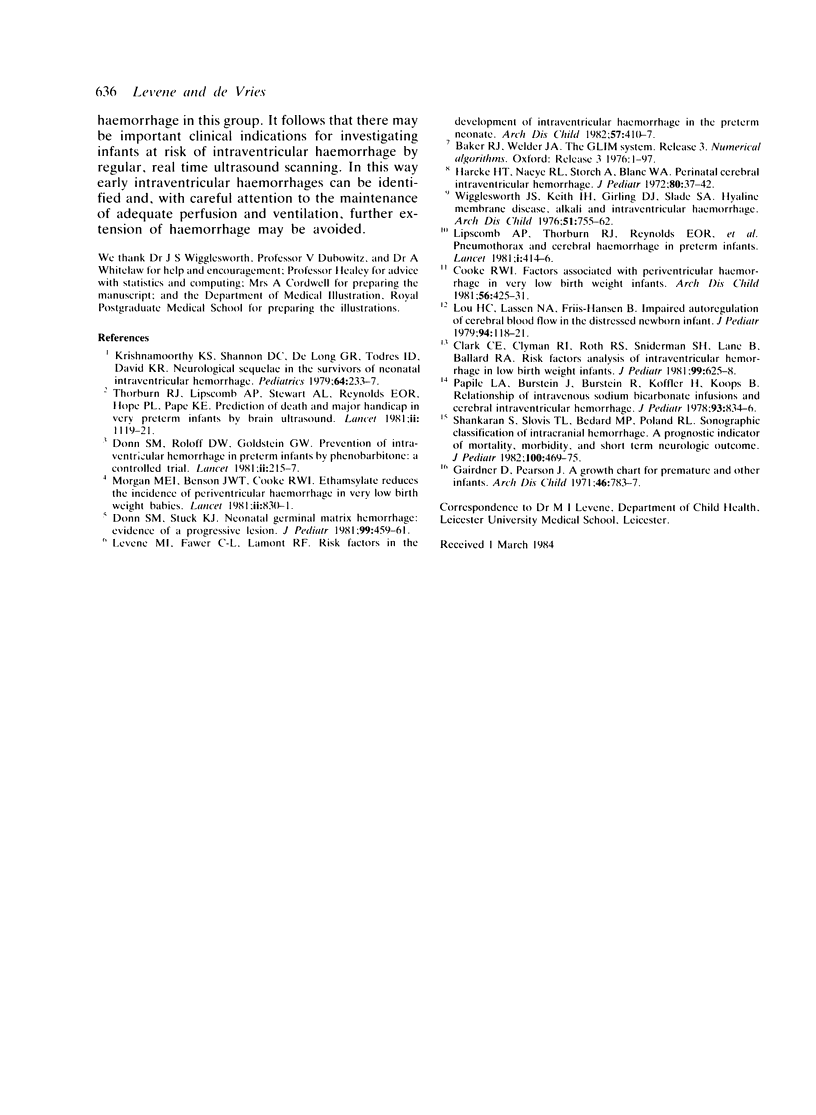
Images in this article
Selected References
These references are in PubMed. This may not be the complete list of references from this article.
- Clark C. E., Clyman R. I., Roth R. S., Sniderman S. H., Lane B., Ballard R. A. Risk factor analysis of intraventricular hemorrhage in low-birth-weight infants. J Pediatr. 1981 Oct;99(4):625–628. doi: 10.1016/s0022-3476(81)80276-4. [DOI] [PubMed] [Google Scholar]
- Donn S. M., Stuck K. J. Neonatal germinal matrix hemorrhage: evidence of a progressive lesion. J Pediatr. 1981 Sep;99(3):459–461. doi: 10.1016/s0022-3476(81)80349-6. [DOI] [PubMed] [Google Scholar]
- Harcke H. T., Jr, Naeye R. L., Storch A., Blanc W. A. Perinatal cerebral intraventricular hemorrhage. J Pediatr. 1972 Jan;80(1):37–42. doi: 10.1016/s0022-3476(72)80450-5. [DOI] [PubMed] [Google Scholar]
- Krishnamoorthy K. S., Shannon D. C., DeLong G. R., Todres I. D., Davis K. R. Neurologic sequelae in the survivors of neonatal intraventricular hemorrhage. Pediatrics. 1979 Aug;64(2):233–237. [PubMed] [Google Scholar]
- Papile L. A., Burstein J., Burstein R., Koffler H., Koops B. Relationship of intravenous sodium bicarbonate infusions and cerebral intraventricular hemorrhage. J Pediatr. 1978 Nov;93(5):834–836. doi: 10.1016/s0022-3476(78)81096-8. [DOI] [PubMed] [Google Scholar]
- Shankaran S., Slovis T. L., Bedard M. P., Poland R. L. Sonographic classification of intracranial hemorrhage. A prognostic indicator of mortality, morbidity, and short-term neurologic outcome. J Pediatr. 1982 Mar;100(3):469–475. doi: 10.1016/s0022-3476(82)80462-9. [DOI] [PubMed] [Google Scholar]
- Thorburn R. J., Lipscomb A. P., Stewart A. L., Reynolds E. O., Hope P. L., Pape K. E. Prediction of death and major handicap in very preterm infants by brain ultrasound. Lancet. 1981 May 23;1(8230):1119–1121. doi: 10.1016/s0140-6736(81)92295-9. [DOI] [PubMed] [Google Scholar]
- Wigglesworth J. S., Keith I. H., Girling D. J., Slade S. A. Hyaline membrane disease, alkali, and intraventricular haemorrhage. Arch Dis Child. 1976 Oct;51(10):755–762. doi: 10.1136/adc.51.10.755. [DOI] [PMC free article] [PubMed] [Google Scholar]



